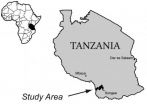(Press-News.org) New research shows that the concentration of sperm in men's semen has been in steady decline between 1989 and 2005 in France. In addition, there has been a decrease in the number of normally formed sperm. The study is published online today (Wednesday) in Europe's leading reproductive medicine journal Human Reproduction [1].
The study is important because, with over 26,600 men involved, it is probably the largest studied sample in the world and although the results cannot be extrapolated to other countries, it does support other studies from elsewhere that show similar drops in semen concentration and quality in recent years.
The researchers used the French assisted reproduction technology (ART) database Fivnat, which collected data from 126 main ART centres in France. They examined semen samples provided by men who were the partners of women undergoing fertility treatment because their Fallopian tubes were blocked or missing – in other words, the couples' infertility was due to these problems rather than to any problems with the men's sperm.
They found that over the 17-year period there was a significant and continuous 32.2% decrease in semen concentration (millions of spermatozoa per millilitre of semen), at a rate of about 1.9% per year. The researchers calculated that in men of the average age of 35, semen concentrations declined from an average of 73.6 million/ml in 1989 to 49.9 million/ml in 2005.
In addition, there was a significant 33.4% decrease in the percentage of normally formed sperm over the same period. Changes in the way sperm shape (morphology) was measured during this time may partly explain this decrease and make it difficult to give an estimate for the general population. However, the researchers say that these changes do not account for the total decrease in the quality of sperm morphology observed over the study period.
In their paper, the researchers write: "To our knowledge, it is the first study concluding a severe and general decrease in sperm concentration and morphology at the scale of a whole country over a substantial period. This constitutes a serious public health warning. The link with the environment particularly needs to be determined."
One of the authors, Dr Joëlle Le Moal, an environmental health epidemiologist at the Institut de Veille Sanitaire, Saint Maurice, France, said: "The decline in semen concentration shown in our study means that the average values we have for 2005 fall within the 'fertile' range for men according the definition of the World Health Organisation. However, this is just an average, and there were men in the study who fell beneath the WHO values. The 2005 values are lower than the 55 million/ml threshold, below which sperm concentration is expected to influence the time it takes to conceive."
The researchers also looked at how well the sperm moved (motility) and found that the proportion of motile sperm increased slightly from 49.5% to 53.6% between 1989 and 2005.
Although they made adjustments for variables that could affect the results, such as the men's ages, the season, the centre where they gave their sperm samples, and the technique (standard in vitro fertilisation or intra-cytoplasmic sperm injection), they were unable to control for socioeconomic factors, including smoking and weight, which can affect semen quality and concentration. However, the authors say that, even though ART is equally accessible to the whole population, it tends to be the better educated who undergo it in France and they are less likely to smoke and to be overweight. "Therefore, the real values for sperm parameters in the general population could be slightly lower than those that we present and the decreases could possibly be stronger," they write.
The authors say that there needs to be more research into the possible causes for the decline in semen concentration and percentages of normally formed sperm, but other studies have pointed to the role played by environmental factors such as endocrine disruptors (chemicals that disturb the body's normal hormonal balance). Furthermore, such factors could induce epigenetic changes (changes in the way genes and cells behave) that might be passed down the generations, and which could contribute to a longer process of decline in men's fertility.
Dr Le Moal said: "Impairments in the quality of human gametes (male sperm and female eggs) can be considered as critical biomarkers of effects for environmental stresses, including endocrine disrupters. Firstly, this is because gametes are the very first cells from which human beings are built up during their lifetimes. According to the theories about the developmental origins of health and diseases, early (foetal, postnatal, but possibly also preconceptional) exposures may have an impact on adult health; the testicular dysgenesis syndrome hypothesis could be regarded as an example.
"Secondly, it has been shown in humans and animals that intergenerational effects may occur after foetal exposures, particularly via epigenetic changes. If such exposures and effects occur in successive generations, accumulated outcomes are plausible. So the observed trends could be the result of several generations' changes."
For this reason, the authors say they are concerned that there could be effects on the next generation's health.
"Our public health warning may help health authorities to reinforce their actions on endocrine disruptors, hopefully at the European level, and to sustain research as well as monitoring systems," said Dr Le Moal. "We plan to implement a national monitoring system with the French competent authority (the Biomedicine Agency), which now runs the national registry of ART. Our example could help other countries to implement their own systems. International monitoring systems could be a good idea to understand what is happening on human reproductive outcomes around the world, and evaluate public health actions in future," she concluded.
### [1] "Decline in semen concentration and morphology in a sample of 26 609 men close to general population between 1989 and 2005 in France", by M. Rolland, J. Le Moal, V. Wagner, D. Royère, and J. De Mouzon. Human Reproduction journal. doi:10.1093/humrep/des415
Semen concentration and quality fell in French men between 1989 and 2005
2012-12-05
ELSE PRESS RELEASES FROM THIS DATE:
Put the kettle on? When tea drinkers were viewed as irresponsible as whiskey drinkers
2012-12-05
Poor women who drank tea were viewed as irresponsible as whisky drinkers in early 19th-century Ireland, new research by Durham University has unearthed.
Critics at the time declared that the practice of tea drinking – viewed as a harmless pastime in most past and present societies – was contributing to the stifling of Ireland's economic growth, and was clearly presented as reckless and uncontrollable.
Women who drank tea wasted their time and money, it was said, drawing them away from their duty to care for their husbands and home. It was felt this traditionally female ...
More babies survive premature birth, but serious health problems unchanged
2012-12-05
Research published on bmj.com today suggests that although more babies survived shortly after extreme preterm birth in England in 2006 compared with 1995, the number with major conditions on leaving hospital remained largely unchanged.
A second study, also published today, shows some improvement in the number of extremely preterm children who survived without disability at 3 years of age, but no change in the rate of serious health and developmental problems over the same 10-year period.
Taken together, these two large studies (known as the EPICure studies) suggest ...
Gaps in life expectancy between rich and poor set to increase over next 10 years
2012-12-05
Health inequalities between England's richest and poorest areas have widened in the ten years between 1999 and 2008. Researchers warn, in a study published today on bmj.com, that over the next ten years, we may experience smaller increases in life expectancy than in the past decade and health inequalities may rise at an even faster rate.
Studies have shown that economic decline is associated with long term negative health impacts and the current climate has raised concerns about this. Between 1999 and 2008 the target (set by the government) for reducing the gap in life ...
First measurements made of key brain links
2012-12-05
PROVIDENCE, R.I. [Brown University] — Inside the brains of mice and men alike, a relatively big football-shaped region called the thalamus acts like a switchboard, providing the prefrontal cortex, the part that does abstract thinking and decision-making, with most of its information. The thalamus's responsibility even includes helping the prefrontal cortex to maintain consciousness and arousal.
Essential as this "thalamocortical" partnership is, neuroscientists have understood very little about the connections coming from a matrix of cells in the so-called "nonspecific ...
Protected 'power naps' prove helpful for doctors in training to fight fatigue
2012-12-05
PHILADELPHIA – New research from the Perelman School of Medicine at the University of Pennsylvania and the Philadelphia VA Medical Center indicates that the implementation of protected sleep periods for residents who are assigned to overnight shifts in a hospital represent a viable tool in preventing fatigue and alleviating the physiological and behavioral effects of sleep deprivation among these doctors in training. The new results will be published in the December 5th edition of the Journal of the American Medical Association (JAMA).
"Within the last two years, we've ...
New evidence on how compound found in red wine can help prevent cancer
2012-12-05
University of Leicester scientists will present groundbreaking new evidence about how a chemical found in red wine can help prevent cancer on Wednesday, December 5.
Experts from around the world are set to attend Resveratrol 2012, a major conference at the University which will assess the latest advances in the study of resveratrol – a compound found in the skins of red grapes.
The conference will feature new findings based on the last two years of research, which show how the chemical can help prevent cancer, heart disease and diabetes.
The event follows the first ...
Scientists find oldest dinosaur – or closest relative yet
2012-12-05
Researchers have discovered what may be the earliest dinosaur, a creature the size of a Labrador retriever, but with a five foot-long tail, that walked the Earth about 10 million years before more familiar dinosaurs like the small, swift-footed Eoraptor and Herrerasaurus.
The findings mean that the dinosaur lineage appeared 10 million to 15 million years earlier than fossils previously showed, originating in the Middle Triassic rather than in the Late Triassic period.
"If the newly named Nyasasaurus parringtoni is not the earliest dinosaur, then it is the closest relative ...
Hushed hoarders and prying pilferers
2012-12-05
VIDEO:
Eurasian jays change strategies to prevent others from stealing food and to improve their chances of absconding with other birds’ caches.
Click here for more information.
In order to prevent other birds from stealing the food they are storing for later, Eurasian jays, a type of corvid, minimizes any auditory hints a potential pilferer may use to steal their cache (food that is buried for later use). The new research was published today, 05 December, in the journal ...
Housing sales data used to estimate value of urban natural resources
2012-12-05
ST. PAUL, Minn., December 4, 2012 – Trees, water and lawn clearly matter to urban dwellers. For city planners balancing green space with other demands, the question has been just how much green space matters to residents.
Working with lead author Heather Sander of the University of Iowa, economist Robert Haight of the U.S. Forest Service's Northern Research Station estimated how much home buyers are willing to pay for more scenic vistas, better access to outdoor recreation, and greater neighborhood tree cover. Their study, "Estimating the economic value of cultural ecosystem ...
Telestroke cost effective for hospitals
2012-12-05
PHOENIX — Researchers have found that using telemedicine to deliver stroke care, also known as telestroke, appears to be cost-effective for rural hospitals that do not have an around-the-clock neurologist, or stroke expert, on staff. The research, published today in Circulation: Cardiovascular Quality and Outcomes, is intended to help hospital administrators evaluate telestroke.
In telestroke care, the use of a telestroke robot allows a patient with stroke to be examined in real time by a neurology specialist elsewhere who consults via computer with an emergency room ...


